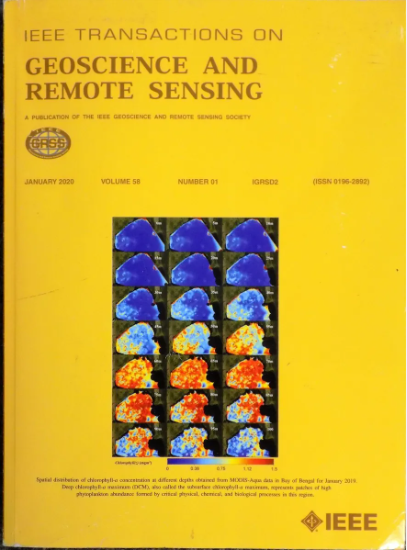北极海冰融化开始连续检测的先进算法
IF 7.5
1区 地球科学
Q1 ENGINEERING, ELECTRICAL & ELECTRONIC
IEEE Transactions on Geoscience and Remote Sensing
Pub Date : 2025-04-15
DOI:10.1109/TGRS.2025.3560261
引用次数: 0
摘要
北极融冰季节的延长和融冰开始日期(MOD)的提前是北极变暖的一个众所周知的指标。自1979年以来,通常利用无源卫星微波辐射计观测估算泛北极MOD分布。然而,以往基于被动微波测量的MOD检测算法在MOD方面的一致性较差,这使人们对其MOD产品的准确性产生了怀疑。为此,本研究提出了一种新的MOD算法TBmax算法,以提高连续熔点的估计精度。TBmax算法利用了海冰的微波辐射特征,日亮温时间序列显示了它们在MOD上的最大亮温。利用AMSR2亮温数据,利用TBmax算法估算的2013 - 2021年泛北极MOD分布成功再现了海冰主要在5月或6月融化的特征,包括高纬度冰和多年冰(MYI)的后期融化趋势。独立数据集(冰质量平衡(IMB)浮标数据)的验证表明,与其他先前的算法相比,TBmax MODs表现出更好的性能(偏差为0.1天,而非−2.7天和13.9天)。由于mod1可以提供海冰表面发射率和能量平衡的信息,改进后的mod1有助于更精确地分析北极环境变化和提高海冰参数的估计。本文章由计算机程序翻译,如有差异,请以英文原文为准。
Advanced Algorithm for Continuous Melt Onset Detection on Arctic Sea Ice
Expansion of the Arctic melting season with an earlier melt onset date (MOD) is a well-known indicator of Arctic warming. Since 1979, the pan-Arctic MOD distributions usually have been estimated using passive satellite microwave radiometer observations. However, there is a poor agreement in MOD between previous MOD detection algorithms based on passive microwave measurements, raising doubts regarding the accuracy of their MOD products. Thus, this study developed a new MOD algorithm, namely TBmax algorithm, to improve the estimation accuracy of continuous melt onset. The TBmax algorithm utilizes the microwave radiation characteristics of sea ice, and the daily brightness temperature time series shows their maximum brightness temperature on MOD. By using AMSR2 brightness temperature data, the pan-Arctic MOD distributions estimated from 2013 to 2021 using the TBmax algorithm successfully reproduced a feature of sea ice melting that mainly during May or June over the Arctic, including the late melting tendency of ice at high latitudes and multiyear ice (MYI). Validation with independent dataset (ice mass balance (IMB) buoy data) suggested that the TBmax MODs showed superior performance compared to other previous algorithms (biases of 0.1 days versus −2.7 and 13.9 days). As MOD can provide information about surface emissivity and the energy budget of the sea ice, the improved MOD may contribute to a more precise analysis of Arctic environment change and enhanced estimation of sea ice parameters.
求助全文
通过发布文献求助,成功后即可免费获取论文全文。
去求助
来源期刊

IEEE Transactions on Geoscience and Remote Sensing
工程技术-地球化学与地球物理
CiteScore
11.50
自引率
28.00%
发文量
1912
审稿时长
4.0 months
期刊介绍:
IEEE Transactions on Geoscience and Remote Sensing (TGRS) is a monthly publication that focuses on the theory, concepts, and techniques of science and engineering as applied to sensing the land, oceans, atmosphere, and space; and the processing, interpretation, and dissemination of this information.
 求助内容:
求助内容: 应助结果提醒方式:
应助结果提醒方式:


